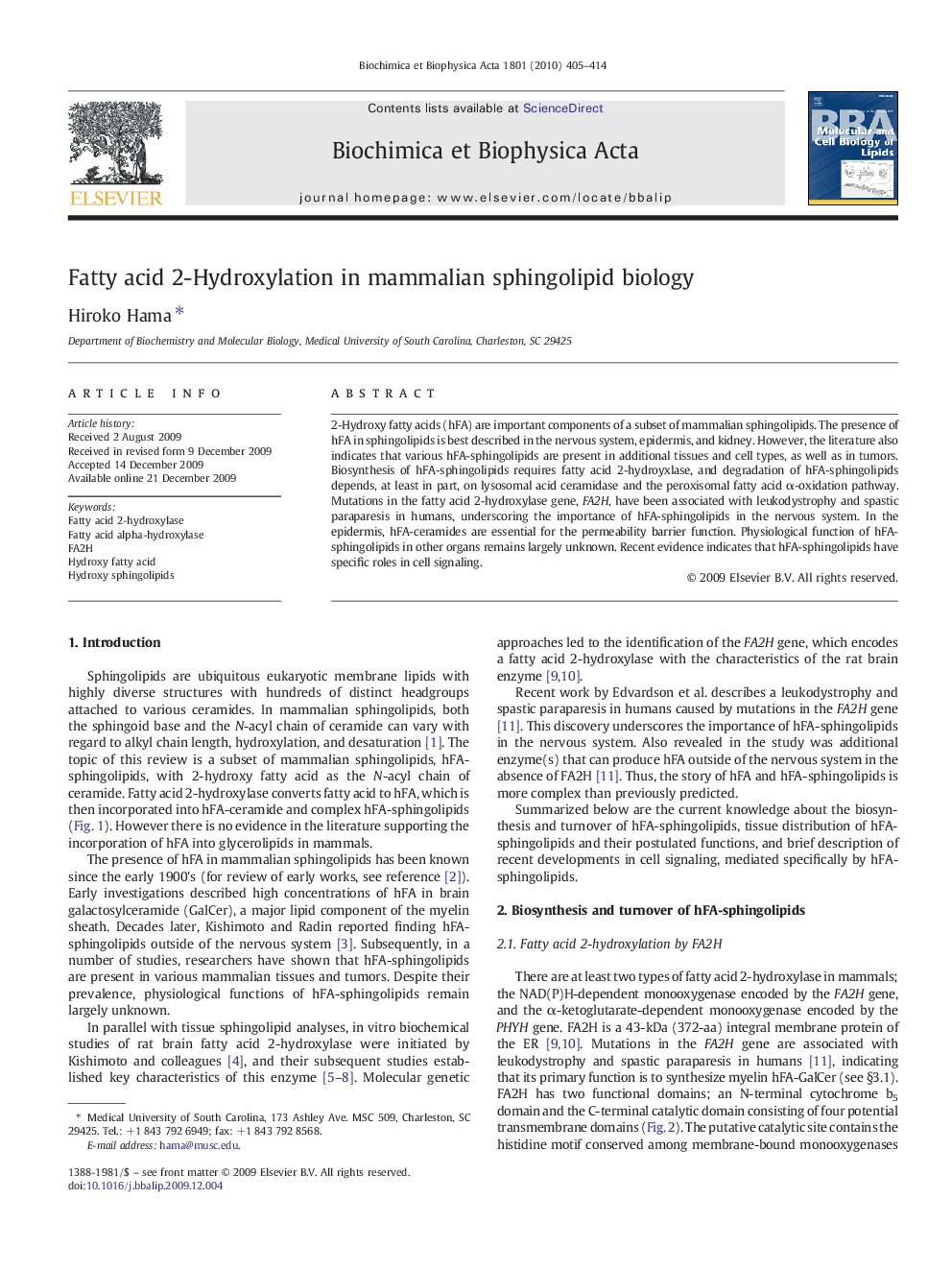| Article ID | Journal | Published Year | Pages | File Type |
|---|---|---|---|---|
| 1949754 | Biochimica et Biophysica Acta (BBA) - Molecular and Cell Biology of Lipids | 2010 | 10 Pages |
2-Hydroxy fatty acids (hFA) are important components of a subset of mammalian sphingolipids. The presence of hFA in sphingolipids is best described in the nervous system, epidermis, and kidney. However, the literature also indicates that various hFA-sphingolipids are present in additional tissues and cell types, as well as in tumors. Biosynthesis of hFA-sphingolipids requires fatty acid 2-hydroyxlase, and degradation of hFA-sphingolipids depends, at least in part, on lysosomal acid ceramidase and the peroxisomal fatty acid α-oxidation pathway. Mutations in the fatty acid 2-hydroxylase gene, FA2H, have been associated with leukodystrophy and spastic paraparesis in humans, underscoring the importance of hFA-sphingolipids in the nervous system. In the epidermis, hFA-ceramides are essential for the permeability barrier function. Physiological function of hFA-sphingolipids in other organs remains largely unknown. Recent evidence indicates that hFA-sphingolipids have specific roles in cell signaling.
